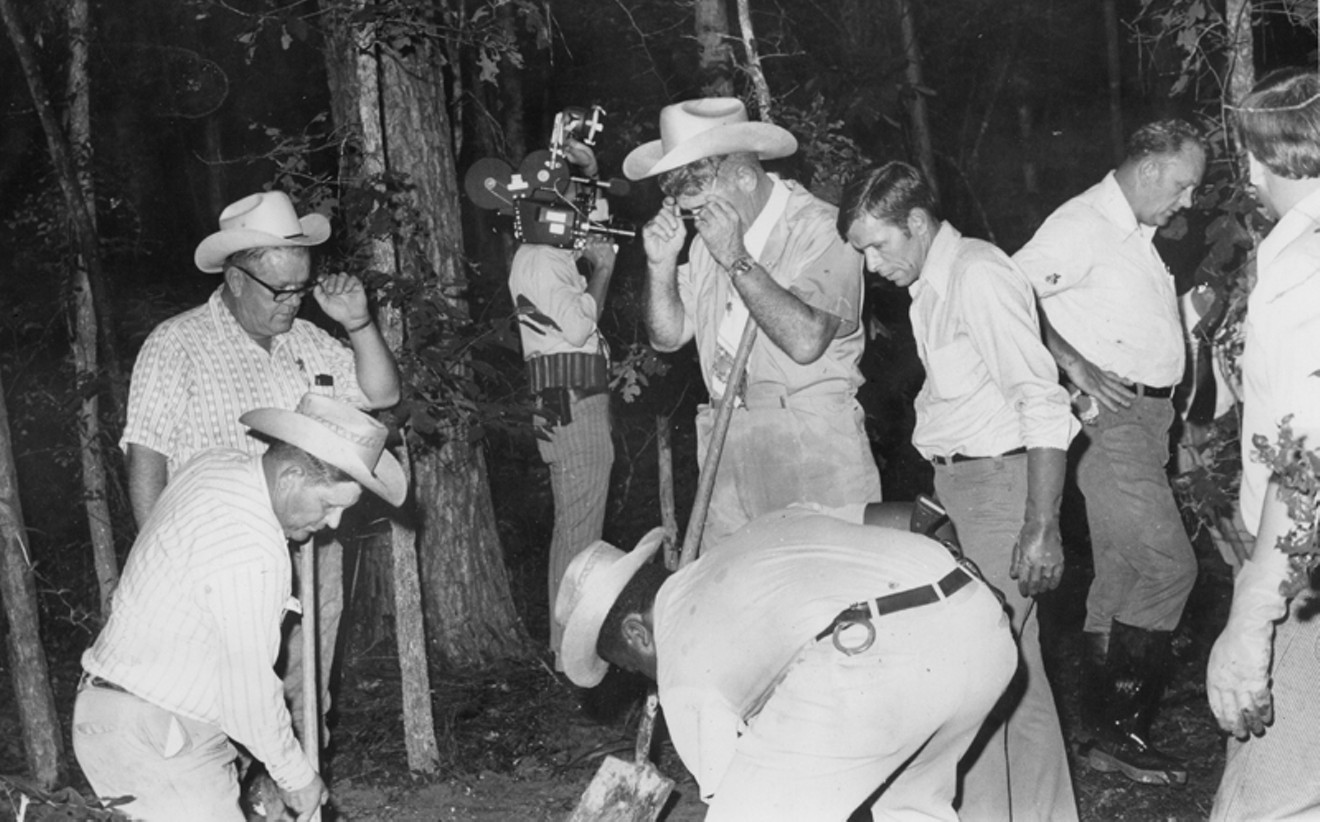But what was very clear was this: That between 1970 and 1973, Dean Corll tortured, raped, and killed nearly 30 young boys from in and around the Houston area (though the real number is likely higher), then buried their bodies in location around the region.
He did so with the help of two teenage accomplices: David Brooks and Elmer Wayne Henley, Jr. They would often procure the boys, bring them to Corll’s home (where he had a torture area ready), and sometimes participate in the crimes and the body removal. The then pre-gentrified Heights section, Oak Forest and Westheimer strip were favorite hunting grounds.
All of this only came out because Henley had shot and killed the 33-year-old Corll after a tense confrontation at Corll’s Pasadena home in August. He then called the police on himself.
That meant that the man later dubbed “The Candy Man Killer”— Corll’s family had owned a candy factory, and he would give free samples to neighborhood children—would never face justice for his heinous crimes. But Brooks and Henley would. Because someone had to answer for them.
Forensic psychologist and criminologist Dr. Katherine Ramsland and documentary producer/writer Tracy Ullman offer a detailed examination of the Corll case and how he groomed and controlled his willing accomplices in The Serial Killer’s Apprentice: The True Story of How Houston’s Deadliest Murderer Turned a Kid Into a Killing Machine (312 pp., $26.95, Crime Ink/Penzler).
As to why the name Dean Corll doesn’t register the same recognition as Ted Bundy, John Wayne Gacy or even Dennis Rader (the BTK Killer), the pair feel it’s because Corll was dead by the time his crimes came to light.
“That is the reason. There was no trial, and even when they tried to find out about him, there was so little information. Few people had comments,” Dr. Ramsland says over Zoom, joined by Ullman.
For Ullman, she came to the case from researching both Gacy and child sex trafficking and pornography rings. And the book makes a strong case for a connection between Corll and a network based out of Dallas. She began talking to Henley in jail, and Ramsland would eventually as well.
“It struck me that [Henley] was not a traditional victim but got swept into something at the age of 14 that no 14-year-old could prevent,” she says. “And then to see that 11 of the victims had also been sold into pornography with [photos or video], it evolved.”
Though how “willing” and how much Henley and Brooks actually participated has long been a blurry area. Even as the boys turned on each other, giving conflicting testimony and memories at their own trials, to the police and the media for decades.
Initially, Brooks was the main procurer for Corll. Though after Henley was brought in when several murders had already occurred, he took that spot. He even marveled at how much harder and longer it took to strangle a person to death than it appeared on movies and TV.
Henley was a school crossing guard, flag boy and avid reader but had a fraught home life with an abusive, alcoholic father who eventually abandoned the family. It’s not hard to see how the (at least appearing) easygoing and permissive Corll with his cool parties, cash, and gifts became a substitute dad.
The trio’s usual M.O. was this. They would together or singly spot a potential victim, either a stranger or an acquaintance of Brooks or Henley. The victim would be enticed to go to a “party” at Corll’s house or apartment (he would sometimes move) with the promise of drugs or alcohol.
The incapacitated victim would then be subdued by force or with a handcuff trick, tied to a bed or wooden board, and then raped and/or tortured, sometimes for more than a day.
Death would be delivered, and the body would be removed, transported, and buried. Police eventually found 17 of them beneath the dirt floor of Corll’s rented boat shed. He had recently inquired about getting a second unit: he was running out of space.
In the book, Ramsland introduces a theory of the “temporary psychopath.” Someone who by all accounts is “normal,” but then can switch on a dime to do horrible things before returning back.
“We know that kids who have come from broken homes or committed petty crimes or into substance abuse are very vulnerable to a predator coming in and making them cross more and more lines until they are so compromised. Then they can only go forward,” Ramsland offers.
“That’s what happened with both David and Wayne. They acted in psychopathic ways at the [direction] of this adult predator.”
What makes The Serial Killer’s Apprentice different from many true crime tomes is that it’s really two books in one. It’s a detailed narrative of the crimes and their aftermath. But also forays into psychology, science, sociology and related case studies. The authors say that was always their intention from the get-go, though neither give either "apprentice" a pass for their own crimes.

Henley (left) and Brooks direct police where to find bodies on the beach at High Island.
Public Domain
But could something like this still happen in 2024, given what has changed about police investigations and DNA (several of Corll’s victims have only been identified in recent years)? And just the general public awareness of pedophiles, missing children and community nosiness?
“We know that Corll would turn up the radio to muffle the screams of the victims. As to why neighbors didn’t complain, I don’t know,” Ramsland says.
“Today, predators still create a buffer around them that they are ‘good guys.’ But it’s a series of facades, even more sophisticated than ever before. And guys who hang out with kids all the time would be [looked at].”
“Elmer’s mother, Mary, was friends with Dean Corll,” Ullman adds. “She didn’t understand what was going on, much like the rest of Houston. As Katherine has said, [Corll] groomed a community. He presented himself as a nice guy working for the power company who gave out candy. But he was also one of the most sadistic, vicious predators ever.”
Now in his late 60s, Henley is still serving his life sentence, while Brooks died of COVID in 2020 while incarcerated. They’ve had diametrically opposite stances on talking about the case over the ensuing decades.
Ramsland thinks that Henley was told talking and showing who he was in a better light might curry favor with a Parole Board. Brooks—married with a child at the time of his trial—seemed to want to put things behind him with no more publicity.
“And some of the things that David said in his police statements were clearly false. He even sent a note through another convict in the system to tell Wayne to shut up,” she says.
Finally, when asked what’s the No. 1 most surprising or important thing each learned or took away about his case after typing the final word, they each have one thing that comes clear.
“We didn’t really touch on the [victim’s] families, but my goal was to expose this case for its inadequacies in investigation and law enforcement’s lack of curiosity in pursuing leads,” Ullman says. “As a parent myself of three kids, to think that the police wouldn’t turn over every stone to find my child and bring everyone to justice, that’s problematic.”
“We hear a lot about victims and what they go through. But for me, it was a deeper sense of how predators operate,” Ramsland adds. “How crafty and manipulative they could be to a broader swatch of people than just their victims. I just want to get across to be aware of people who create a façade and catch them in lies. People should pay attention.”










